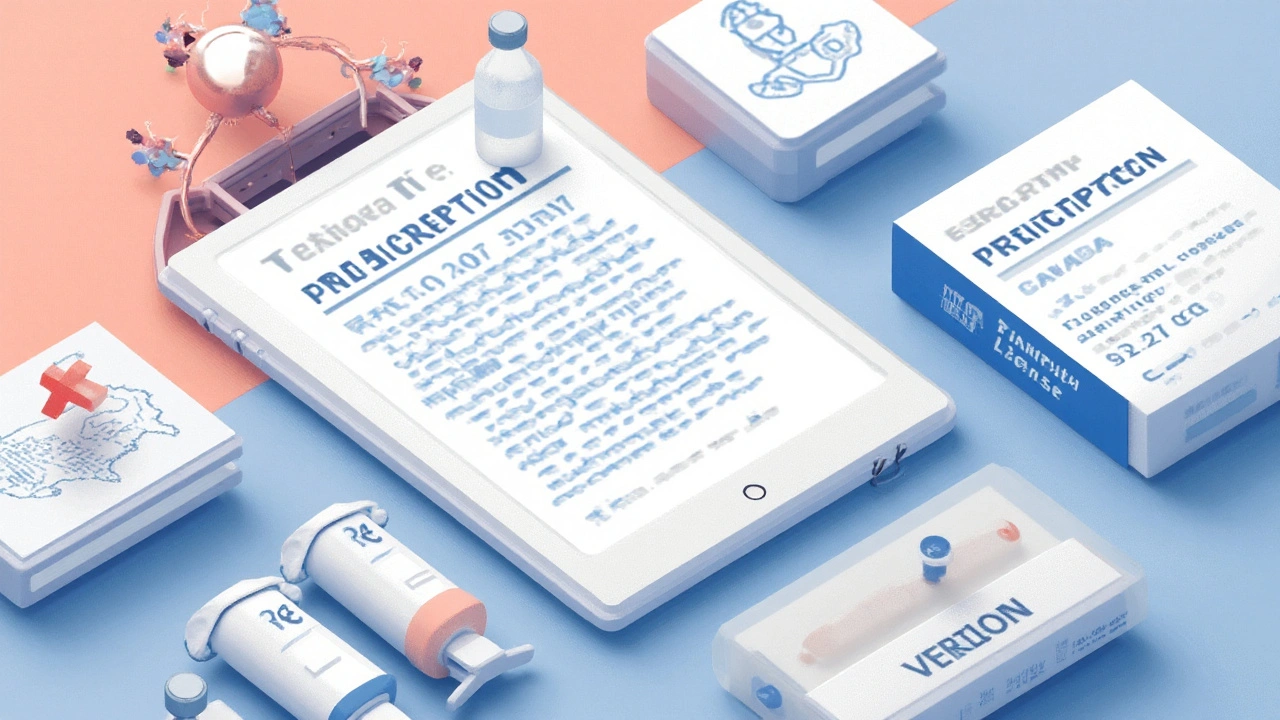You want results-clearer skin, fewer breakouts, smoother lines-and you want the easiest, legit way to get tretinoin online without getting burned by shady sites. Here’s the straight story: you can buy Retin A online safely, but in most countries it’s prescription-only, so the smart move is using licensed telehealth or an accredited online pharmacy. I’ll map out exactly how to do that (Australia, US, UK, Canada, EU), what to buy (strengths, forms), how much to pay, and the red flags to avoid. Expect legal, safe, and practical steps-not hacks that risk your skin or your money.
Where you can legally buy Retin‑A online (by country, 2025)
Tretinoin (brand names: Retin‑A, Retin‑A Micro, Altreno, Refissa; generic: tretinoin) is prescription-only in Australia, the US, UK, Canada, and most of the EU. The safest online path is the same everywhere: medical review → e‑prescription → accredited online pharmacy delivery. Here’s how that looks region by region.
Australia (Melbourne and nationwide):
- Legal status: Prescription (Schedule 4). Regulated by the TGA (Therapeutic Goods Administration).
- How to buy online: Use telehealth (GP or dermatologist) for an eScript, then order from a licensed Australian pharmacy that supports ePrescriptions.
- Typical flow: Telehealth consult → eScript SMS → choose an online pharmacy → verify AHPRA/Australian pharmacy registration → pay → home delivery.
- Notes: Adapalene 0.1% gel is pharmacist‑only (no script) and can be a backup if you can’t get tretinoin right away.
United States:
- Legal status: Prescription-only; regulated by the FDA and state boards of pharmacy.
- How to buy online: Use a telederm service or your health plan’s virtual care for a prescription, then fill it via a NABP‑accredited online pharmacy (look for .pharmacy domain or the NABP “VIPPS‑style” accreditation).
- Notes: Brand options include Retin‑A Micro (microsphere gel) and Altreno (0.05% lotion). Generics are far cheaper and clinically equivalent.
United Kingdom:
- Legal status: Prescription-only; regulated by the MHRA and supplied via GPhC‑registered pharmacies.
- How to buy online: Private online clinics can prescribe after a questionnaire/photo review; you then receive the medicine by post from a GPhC‑registered pharmacy.
- Notes: NHS prescriptions are often first-line for acne; for photoaging, private scripts are more common.
Canada:
- Legal status: Prescription-only; regulated by Health Canada and provincial colleges of pharmacists.
- How to buy online: Virtual care (provincial service or private telehealth) → e‑Rx → accredited Canadian pharmacy with mail delivery.
European Union (general):
- Legal status: Prescription-only; regulations vary by country.
- How to buy online: Use an EU‑authorized online pharmacy that displays the common EU pharmacy logo and is listed in your country’s official register.
Hard no: Avoid any site that sells “Retin‑A” or “tretinoin” without a prescription, ships from unknown overseas locations, hides contact details, or refuses to show its pharmacy license. Regulators (FDA, TGA, MHRA) warn that these sites often sell substandard or counterfeit products. Your skin-and your data-deserve better.
Fast, safe path (works in most countries):
- Book a short telehealth visit (GP or dermatologist). Bring a list of products you’ve tried and photos in good light.
- Ask for a beginner‑friendly tretinoin strength and a 2-3 month supply.
- Fill at an accredited online pharmacy (check the regulator’s register) and choose tracked shipping.
- Save the invoice, batch number, and expiry date for your records.
What to buy: strengths, forms, and how much you actually need
You’re choosing three things: strength, vehicle (cream/gel/lotion), and tube size. Pick with your skin type and goals in mind. The American Academy of Dermatology (AAD) notes it takes 8-12 weeks to see acne improvements and several months for fine‑line texture gains, so plan for a multi‑month run.
Common strengths:
- 0.025%: Gentle starter for dry/sensitive skin, melasma, or maintenance.
- 0.05%: Most popular “sweet spot” for acne and anti‑aging once skin tolerates it.
- 0.1%: High strength. For resilient skin and under close guidance.
Vehicles:
- Cream: More hydrating; good for drier or mature skin. Slower penetration, often better tolerated.
- Gel: Lighter; good for oilier/acne‑prone skin. Can sting more on sensitive types.
- Lotion (e.g., Altreno in the US): Balanced feel; often pricier.
- Microsphere gel (e.g., Retin‑A Micro): Slower release; can reduce irritation for some.
Tubes and how long they last:
- 20 g tube: ~2-3 months if you’re using a pea‑sized amount nightly for face only.
- 45 g tube: ~4-6 months for face; choose this if you’ll treat neck/chest or want fewer refills.
Brand vs generic: Generics (tretinoin) match the active ingredient and strength. Most dermatology guidelines consider them clinically interchangeable with brands. Choose generic unless there’s a specific reason (texture preference, an allergy to an excipient, or insurance that favors a brand).
Starter setup (low‑irritation plan):
- Strength: 0.025% cream if dry/sensitive; 0.025-0.05% gel if oily.
- Schedule: 2-3 nights/week for 2 weeks → every other night for 2-4 weeks → nightly if tolerated.
- Amount: Pea‑size for the whole face (not a dollop). Avoid eyelids, corners of nose/mouth.
- Buffer: Moisturizer first, then tretinoin (or mix a small amount), then moisturizer again if needed.
- Sun: Daily SPF 30+ is non‑negotiable. No sunscreen = no tretinoin.
When to go stronger: If you’ve used 0.025% comfortably for 8-12 weeks and want more oomph, step to 0.05%. Consider 0.1% only if your skin is consistently happy and a clinician agrees it’s worth it for your goals.

Prices, shipping, and smart ways to save (real‑world ranges)
Prices bounce around by country, brand, strength, and tube size. Here are 2025 ballparks for legitimate sources. These are not sponsored figures and will vary; always compare.
| Region | Generic tretinoin (20-25 g) | Generic tretinoin (40-45 g) | Brand (Retin‑A/Refissa/Altreno) | Telehealth consult | Shipping (online pharmacy) |
|---|---|---|---|---|---|
| Australia | AUD $25-$60 | AUD $45-$95 | AUD $120-$220+ | AUD $0-$70 (varies by service) | AUD $7-$15 (tracked) |
| United States | USD $25-$80 | USD $45-$140 | USD $150-$350+ | USD $0-$75 | USD $5-$15 |
| United Kingdom | £12-£35 | £22-£60 | £80-£160+ | £0-£35 (private) | £3-£6 (tracked) |
| Canada | CAD $20-$55 | CAD $35-$95 | CAD $140-$260+ | CAD $0-$60 | CAD $7-$12 |
| EU (varies) | €10-€35 | €18-€65 | €90-€180+ | €0-€45 | €4-€10 |
Cost math that actually helps:
- Per‑month rough cost: A 20 g tube typically lasts ~10 weeks. In the US at USD $40, that’s about $16/month for the medicine (plus consult/shipping). A 45 g tube can halve your refill hassle and often lowers the per‑gram price.
- Insurance: US plans often cover generic tretinoin for acne with prior authorization but may not for photoaging. In Australia, acne scripts can be affordable; photoaging scripts may be private. UK NHS charges the standard Rx fee when indicated.
- Coupons/discounts: Pharmacy coupons and manufacturer programs can cut US brand prices, but generics remain the best value.
- Telehealth bundles: Some services wrap consult + meds + shipping into one monthly price. Compare the math against a one‑off consult + local pharmacy.
Shipping and timing:
- Domestic shipping is usually 2-5 business days (tracked). Rural addresses can take longer.
- Check heat exposure policies. Tretinoin is light‑ and heat‑sensitive; standard post is fine, but don’t leave it in a hot mailbox or car.
Safety checklist: legit pharmacy signals, risks, and red flags
Regulators worldwide (FDA, TGA, MHRA, Health Canada) warn about illegal online pharmacies. Here’s a quick checklist to stay safe.
Legit signals to look for:
- License visible: The pharmacy lists its registration number and regulator (AHPRA/Pharmacy Board in AU, state board/NABP in US, GPhC in UK, EU common logo + national register).
- Prescription required: No Rx = no sale for tretinoin. Period.
- Real contact details: Physical business address, phone, and pharmacist support hours.
- Secure checkout and privacy policy: Clear statements about data handling and no resale of your info.
- Batch/expiry on the box: Retain photos of the label and pack.
Red flags (close the tab):
- “No prescription needed” for tretinoin.
- Prices that are unbelievably low with overseas shipping from unknown sources.
- No pharmacist consultation option.
- Pushy upsells of unrelated meds or supplements.
- Weird spelling, blurry logos, or cloned branding.
Risks and mitigations:
- Irritation (the purge): Dryness, flaking, and stinging are common in the first 2-6 weeks. Mitigate by starting 2-3 nights/week, moisturizing, and using sunscreen. The AAD suggests that slow, steady use improves tolerance and results over time.
- Sun sensitivity: Tretinoin makes you more UV‑sensitive. Daily SPF 30+ and reapply every 2 hours outdoors.
- Pregnancy and breastfeeding: Dermatology and regulatory guidance advise avoiding tretinoin during pregnancy and when trying to conceive. If breastfeeding, discuss risks/benefits with your clinician; avoid application on or near the breast.
- Interaction pitfalls: Don’t layer with benzoyl peroxide at the same time; it can deactivate some tretinoins. Use benzoyl peroxide in the morning and tretinoin at night. Be gentle with exfoliating acids early on.

Smarter options and next steps
If you can’t get a prescription today:
- Adapalene 0.1% gel (OTC in the US; pharmacist‑only in Australia) is a solid retinoid alternative for acne.
- Azelaic acid 10-15% (OTC) helps with acne and post‑inflammatory marks; 20% is prescription in some countries.
- Retinaldehyde/retinol serums can bridge the gap for texture and tone, though they’re milder and slower.
Simple routine that works with tretinoin:
- AM: Gentle cleanser → vitamin C (optional) → moisturizer → SPF 30+.
- PM: Cleanser → moisturizer → tretinoin (or moisturizer-tretinoin-moisturizer sandwich) → eyes/neck moisturized with a bland cream.
Ethical, clear next step (whatever your country): Book a short telehealth consult, ask for a beginner plan (0.025% or 0.05%, 2-3 months’ supply), then fill at an accredited online pharmacy you’ve verified with the regulator’s register. Save your receipt and pack details. If anything feels off, switch pharmacies.
Mini‑FAQ
How long until I see results? Acne usually improves after 8-12 weeks; texture and fine lines take a few months. Stick with it unless your clinician says otherwise.
Can I use tretinoin around my eyes? Avoid eyelids and the immediate eye area. If your doctor approves, some people use a very thin film on crow’s feet with extra buffering, but this is advanced and easy to irritate.
Is 0.1% better? Stronger isn’t always better. Many people get great results with 0.05% and fewer side effects. The “best” strength is the one you’ll use consistently.
What about tanning or chemical peels? Skip tanning. Pause tretinoin a few days before and after peels or waxing to avoid over‑irritation; ask your clinician for timing.
Face only? You can treat neck/chest or bacne, but those areas are often more sensitive. Use less product and go slower.
Troubleshooting by scenario
- Very sensitive skin: Start with 0.025% cream twice weekly, apply over moisturizer, and add a bland barrier cream on top. If stinging lasts >30 minutes or you get cracking, pause 3-5 days.
- Darker skin tones and post‑inflammatory marks: Titrate slowly to reduce irritation (which can trigger hyperpigmentation). Pair with daily sunscreen and consider adding azelaic acid on off nights.
- Rosacea‑prone: Get a clinician’s OK first. Sometimes a lower strength, cream base, and very slow schedule works; for many, azelaic acid is kinder.
- Planning pregnancy: Don’t start tretinoin. If you’re using it, plan a stop date in advance and discuss alternatives with your clinician.
- Peeling won’t quit: Cut frequency in half, switch to cream, buffer with moisturizer, and avoid scrubs/acids until skin calms.
Credibility check
Everything here aligns with guidance from primary regulators and experts: TGA (Australia), FDA (US), MHRA/NHS (UK), Health Canada, and dermatology societies like the AAD. These bodies consistently say tretinoin requires a valid prescription, illegal online pharmacies are risky, and slow, consistent use with sun protection is the path to results.
If you do one thing today: book that short telehealth visit, get the right script, and fill it through a pharmacy you can verify in the regulator’s register. That’s the safest way to get tretinoin working for you without the guesswork.


Aaron Miller
August 20 2025Listen up, fellow Americans!! If you’re betting on sketchy overseas pharmacies to save a buck, you’re buying a ticket to disaster!! The only legitimate pathway is a US‑based teledermatology platform that verifies your insurance and follows FDA guidelines!! Any site that promises “no prescription required” is a fraud that preys on naive shoppers!! Stick to HIPAA‑compliant portals, demand the .pharmacy domain, and verify the NABP VIPPS accreditation!! Anything else is a gamble with your skin and your credit card!!